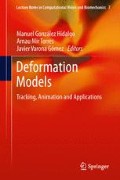Abstract
Error analysis was performed for quantifying noise in ultrasound elastography images of biologically soft tissue. The interaction of ultrasonic bean with tissue was modeled in 3D. Static tissue deformation applied by an external mechanical source was represented by a second order strain tensor. Complex motion induced in response to deformation was tracked using standard cross correlation based estimator. Pre- and postcompression echo signals were windowed by the same kernel and cross correlated. The amount of shift where the cross correlation function peaked was considered as the estimate of the local tissue motion. Covariance matrix of the errors made in estimating motions within two windows with certain amount of overlap was derived analytically. The components of the covariance matrix were related to the variances of the displacement errors and the errors made in estimating the elements of the strain tensor. The results were combined to investigate the dependencies of these errors on the experimental and signal-processing parameters as well as to determine the effects of one strain component on the estimation of the other. The expressions were evaluated for special cases of axial strain estimation in the presence of axial, axial-shear and lateral-shear type deformations. The signals were shown to decorrelate with any of these deformations; with strengths depending on the reorganization and interaction of the tissue scatterers with the ultrasonic point spread function following the deformation. The loss of signal coherence resulted in more degradation in the estimation performance. The precision of the estimates was sensitive to the direction of the motion. Motion parallel to the transducer array axis produced more error than the motion perpendicular to this axis, and axial shear type deformation introduced more error than that of the lateral shear depending on the features of ultrasonic point spread function as it was defined by its width, length and wavelength. Conditions that favor the improvements in the motion estimation performance were discussed, and advantages gained by signal companding and pulse compression were also illustrated.
Access this chapter
Tax calculation will be finalised at checkout
Purchases are for personal use only
References
Bae U, Dighe M, Dubinsky T, Minoshima S, Shamdasani V, Kim Y (2007) Ultrasound thyroid elastography using carotid artery pulsation: preliminary study. J Ultrasound Med 26(6):797–805
Bilgen M (2000) Dynamics of errors in 3d motion estimation and implications for strain-tensor imaging in acoustic elastography. Phys Med Biol 45(6):1565–1578
Bilgen M, Insana MF (1998) Elastostatics of a spherical inclusion in homogeneous biological media. Phys Med Biol 43(1):1–20
Chakraborty A, Bamber JC, Dorward NL (2012) Slip elastography: a novel method for visualising and characterizing adherence between two surfaces in contact. Ultrasonics 52(3):364–376
Hall TJ, Zhu Y, Spalding CS (2003) In vivo real-time freehand palpation imaging. Ultrasound Med Biol 29(3):427–435
Ophir J, Garra B, Kallel F, Konofagou E, Krouskop T, Righetti R, Varghese T (2000) Elastography imaging. Ultrasound Med Biol 26:S23–S29
Ophir J, Srinivasan S, Righetti R, Thittai A (2011) Elastography: a decade of progress (2000–2010). Curr Med Imaging Rev 7(4):292–312
Parker KJ, Doyley MM, Rubens DJ (2011) Imaging the elastic properties of tissue: the 20 year perspective. Phys Med Biol 56(1):R1–R29
Rao M, Chen Q, Shi H, Varghese T, Madsen EL, Zagzebski JA, Wilson TA (2007) Normal and shear strain estimation using beam steering on linear-array transducers. Ultrasound Med Biol 33(1):57–66
Thittai AK, Yamal JM, Mobbs LM, Kraemer-Chant CM, Chekuri S, Garra BS, Ophir J (2011) Axial-shear strain elastography for breast lesion classification: further results from in vivo data. Ultrasound Med Biol 37(2):189–197
Wells PN, Liang HD (2011) Medical ultrasound: imaging of soft tissue strain and elasticity. J R Soc Interface 64(8):1521–1549
Author information
Authors and Affiliations
Corresponding author
Editor information
Editors and Affiliations
Rights and permissions
Copyright information
© 2013 Springer Science+Business Media Dordrecht
About this chapter
Cite this chapter
Bilgen, M. (2013). Errors in Estimates of Motion and Strain-Tensor in Ultrasound Elastography. In: González Hidalgo, M., Mir Torres, A., Varona Gómez, J. (eds) Deformation Models. Lecture Notes in Computational Vision and Biomechanics, vol 7. Springer, Dordrecht. https://doi.org/10.1007/978-94-007-5446-1_12
Download citation
DOI: https://doi.org/10.1007/978-94-007-5446-1_12
Published:
Publisher Name: Springer, Dordrecht
Print ISBN: 978-94-007-5445-4
Online ISBN: 978-94-007-5446-1
eBook Packages: EngineeringEngineering (R0)

